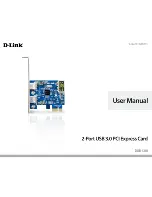
Glossary
ELSA TanGo 2000
31
Glossary
K
1TR6 –
1TR6 is a Telekom guideline for S
0
-in-
terface ISDN terminal units which defines the
➞
D channel protocol.
K
a/b port –
The a/b port is used to connect
analog terminal devices (e.g. telephone, ans-
wering machine, fax) to ISDN adapters.
K
Asynchronos transmission –
In serial data
transmission a method is needed to synchroni-
ze transmitter and receiver in order to enable
the receiver to detect the beginning and end of
a transmitted character. In asynchronous trans-
mission this structuring is achieved by marking
each byte to be sent with one start bit and one
or two stop bits.Especially in the microcompu-
ter sector, this start/stop method is one of the
most commonly used transmission methods,
since, unlike ß synchronous transmission, it is
comparatively easy to perform.
K
AT command set –
"Intelligent" modems
are able to establish connections and accept
calls automatically. This requires a set of mo-
dem control commands. The extended AT com-
mand set (AT = command prefix ATtention) has
become a world-wide standard for the syntax
of these commands. All ELSA modems are
equipped with an automatic dialing device and
can accept calls automatically. They use an ex-
tended AT command set, depending on the re-
spective modem type.
K
B channel –
➞
Basic channel
K
Basic Rate Interface –
ISDN subscriber
connection with two
➞
bearer channels
(64,000 bps each) and a signal channel (16,000
bps). The
➞
S
0
interface is the subscriber inter-
face used by the Basic Rate Interface.
K
Basic channel –
ISDN transfer channel (al-
so known as B channel) for the delivery of com-
munications data with a capacity of 64,000 bps.
K
Baud –
Baud (abbreviation: Bd) is the unit for
the step rate (1 Bd = 1 step per second), i.e. the
frequency of status changes on a transmission
channel per second. Erroneously, the unit Baud
is often confused with the transmission rate
measured in bps. In the case of signals having
only two states, the step rate is identical with
the transmission rate. Rates over 1200 bps are,
however, normally performed by transmission
of four, eight or more bits per step, so that in
these cases the step rate is lower than the
transmission rate. Example: V.32 = step rate
2400 Baud, transmission rate 9600 bps.
K
CCITT –
ITU-T
K
Communications software –
Communica-
tions software such as a terminal program is re-
quired to operate the ISDN terminal adapter
from a personal computer, to change the trans-
fer parameters for example, or to initiate file
transfers (
➞
Download,
➞
Upload). An ’intelli-
gent terminal’, i.e. a simple input/output device
with additional functions for storage of recei-
ved data or the transmission of local data, is
emulated on a PC using such a program.
K
D channel –
➞
Signaling channel
K
Data format –
To allow a data exchange bet-
ween two stations in an asynchronous trans-
mission, the parties must agree on the length
and structure of the bytes to be transferred.
This specification is called data format. The
most common data formats for asynchronous
transmission are: 8N1 (1 start bit, 8 data bits,
no parity bit and 1 stop bit = 10 bits per byte)
and 7E1 (1 start bit, 7 data bits, 1 parity bit
(even parity) and 1 stop bit = 10 bits per byte).
Содержание TanGo 2000
Страница 1: ...ELSA TanGoTM 2000...
Страница 6: ...Contents ELSA TanGo 2000 VI Warranty Conditions 29 Glossar 31 Index 35...
Страница 40: ...Glossary ELSA TanGo 2000 34 Notes...





































